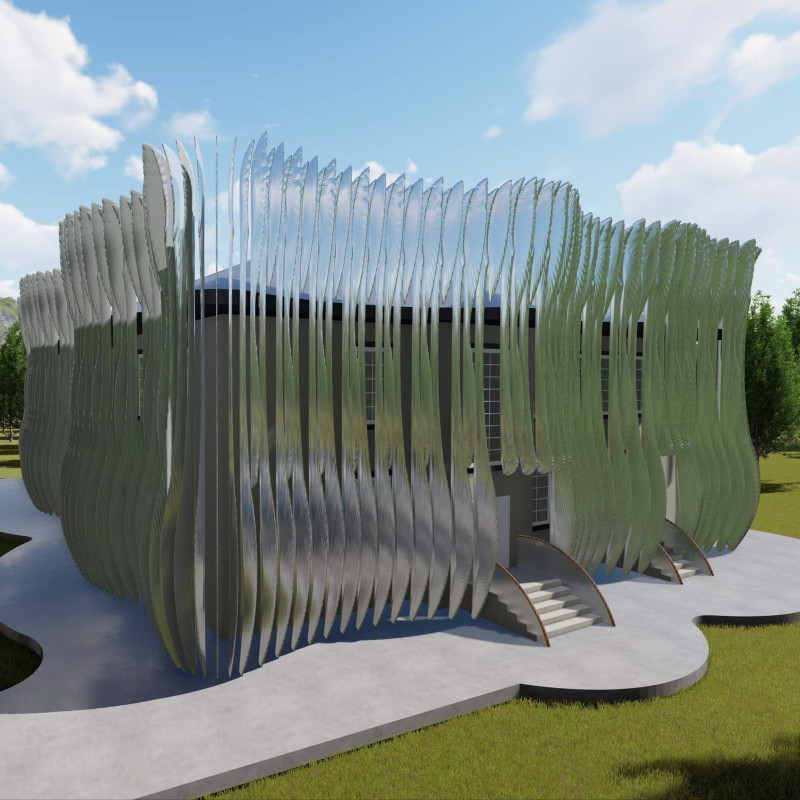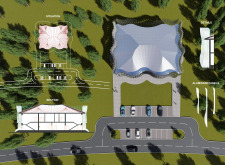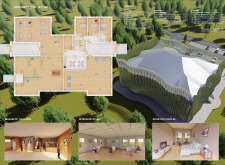5 key facts about this project
The Omuli Museum of the Horse is a contemporary building that balances traditional design with a strong connection to nature. Located in a landscape that encourages creativity, the museum serves various functions related to equine culture and the arts. The design focuses on two main ideas: keeping the visual character of the existing building and enhancing its relationship with the environment.
Preservation of Visual Identity
The project aims to retain the historic charm of the building while allowing for necessary updates. The facade will largely remain unchanged, but modifications to doors and windows will ensure the layout meets modern use. A new roof made from trapezoidal sheet metal is proposed to modernize the appearance, while also addressing practical concerns such as weather resistance and durability.
Integration with Nature
A notable feature is the “mushroom curtain,” which consists of aluminum panels that encircle the building. These panels do more than just create an eye-catching design; they also improve the environmental efficiency of the museum. Anchoring the panels at the floor and roof edges provides stability, while their arrangement helps reduce wind impact and forms an air barrier that enhances heating performance.
Functional Organization
The museum is organized into three interconnected areas. The first serves as an artist's day workshop for events, encouraging engagement among local creators. The second area acts as a residence for visiting artists, providing them with a place to stay and work. The third combines a guest house with the Museum of the Horse, making it easy for visitors to access both artistic experiences and accommodations.
Design Detail
The layering of the aluminum panels not only supports the structure but also adds to the building's visual interest. This careful design promotes interaction between the building and its natural surroundings, creating an environment where visitors can appreciate both the architecture and the landscape.





















































